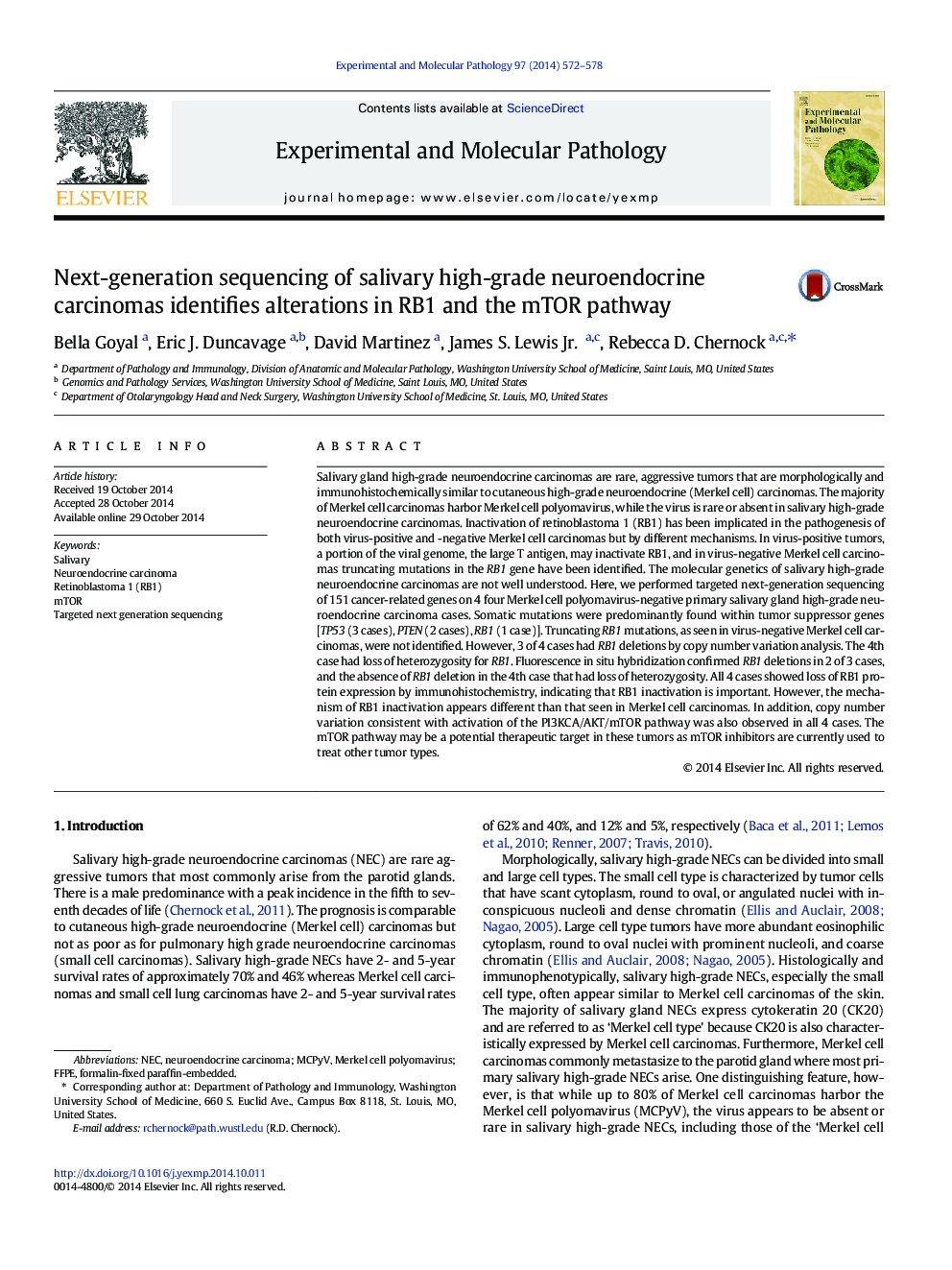| کد مقاله | کد نشریه | سال انتشار | مقاله انگلیسی | نسخه تمام متن |
|---|---|---|---|---|
| 5888146 | 1152304 | 2014 | 7 صفحه PDF | دانلود رایگان |

- Next-generation sequencing of 151 genes in 4 salivary high-grade NECs was performed.
- RB1 mutations were common and protein expression was lost in all cases.
- Activation of the mTOR pathway was identified in all cases.
- mTOR inhibitors may be a potential therapeutic target in these rare tumors.
Salivary gland high-grade neuroendocrine carcinomas are rare, aggressive tumors that are morphologically and immunohistochemically similar to cutaneous high-grade neuroendocrine (Merkel cell) carcinomas. The majority of Merkel cell carcinomas harbor Merkel cell polyomavirus, while the virus is rare or absent in salivary high-grade neuroendocrine carcinomas. Inactivation of retinoblastoma 1 (RB1) has been implicated in the pathogenesis of both virus-positive and -negative Merkel cell carcinomas but by different mechanisms. In virus-positive tumors, a portion of the viral genome, the large T antigen, may inactivate RB1, and in virus-negative Merkel cell carcinomas truncating mutations in the RB1 gene have been identified. The molecular genetics of salivary high-grade neuroendocrine carcinomas are not well understood. Here, we performed targeted next-generation sequencing of 151 cancer-related genes on 4 four Merkel cell polyomavirus-negative primary salivary gland high-grade neuroendocrine carcinoma cases. Somatic mutations were predominantly found within tumor suppressor genes [TP53 (3 cases), PTEN (2 cases), RB1 (1 case)]. Truncating RB1 mutations, as seen in virus-negative Merkel cell carcinomas, were not identified. However, 3 of 4 cases had RB1 deletions by copy number variation analysis. The 4th case had loss of heterozygosity for RB1. Fluorescence in situ hybridization confirmed RB1 deletions in 2 of 3 cases, and the absence of RB1 deletion in the 4th case that had loss of heterozygosity. All 4 cases showed loss of RB1 protein expression by immunohistochemistry, indicating that RB1 inactivation is important. However, the mechanism of RB1 inactivation appears different than that seen in Merkel cell carcinomas. In addition, copy number variation consistent with activation of the PI3KCA/AKT/mTOR pathway was also observed in all 4 cases. The mTOR pathway may be a potential therapeutic target in these tumors as mTOR inhibitors are currently used to treat other tumor types.
Journal: Experimental and Molecular Pathology - Volume 97, Issue 3, December 2014, Pages 572-578